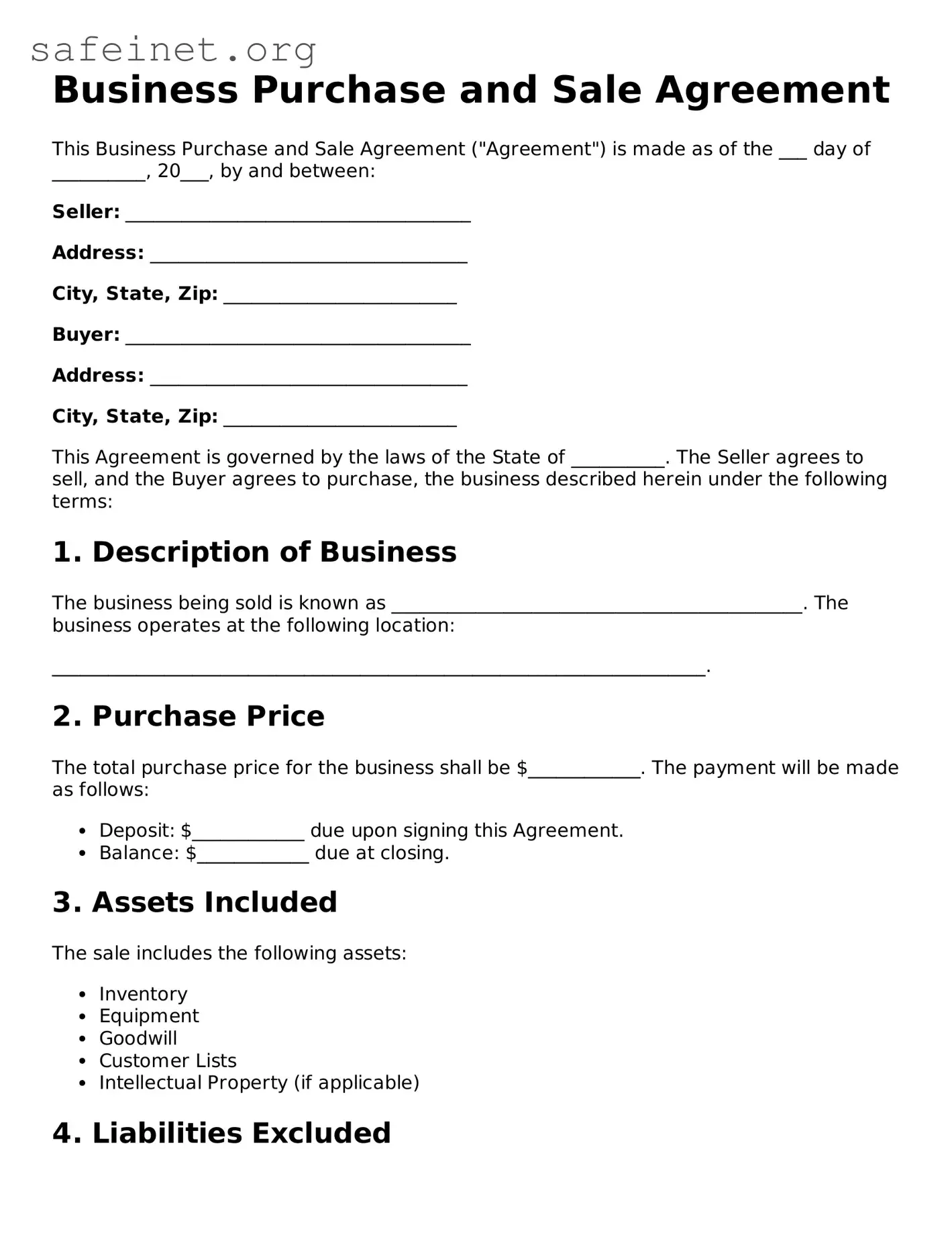Business Purchase and Sale Agreement
This Business Purchase and Sale Agreement ("Agreement") is made as of the ___ day of __________, 20___, by and between:
Seller: _____________________________________
Address: __________________________________
City, State, Zip: _________________________
Buyer: _____________________________________
Address: __________________________________
City, State, Zip: _________________________
This Agreement is governed by the laws of the State of __________. The Seller agrees to sell, and the Buyer agrees to purchase, the business described herein under the following terms:
1. Description of Business
The business being sold is known as ____________________________________________. The business operates at the following location:
______________________________________________________________________.
2. Purchase Price
The total purchase price for the business shall be $____________. The payment will be made as follows:
- Deposit: $____________ due upon signing this Agreement.
- Balance: $____________ due at closing.
3. Assets Included
The sale includes the following assets:
- Inventory
- Equipment
- Goodwill
- Customer Lists
- Intellectual Property (if applicable)
4. Liabilities Excluded
The Buyer shall not assume any liabilities of the Seller, including but not limited to:
- Outstanding debts
- Pending lawsuits
- Tax liabilities
5. Closing Date
The closing of the sale shall take place on or before the ___ day of __________, 20___, at a location mutually agreed upon by both parties.
6. Representations and Warranties
The Seller represents that:
- They have the authority to sell the business.
- The business is in compliance with all applicable laws.
- There are no pending disputes or claims against the business.
7. Governing Law
This Agreement will be governed by and construed in accordance with the laws of the State of __________.
8. Signatures
IN WITNESS WHEREOF, the parties hereto have executed this Business Purchase and Sale Agreement as of the date first above written.
Seller Signature: _______________________________
Date: _____________________________________
Buyer Signature: _______________________________
Date: _____________________________________
